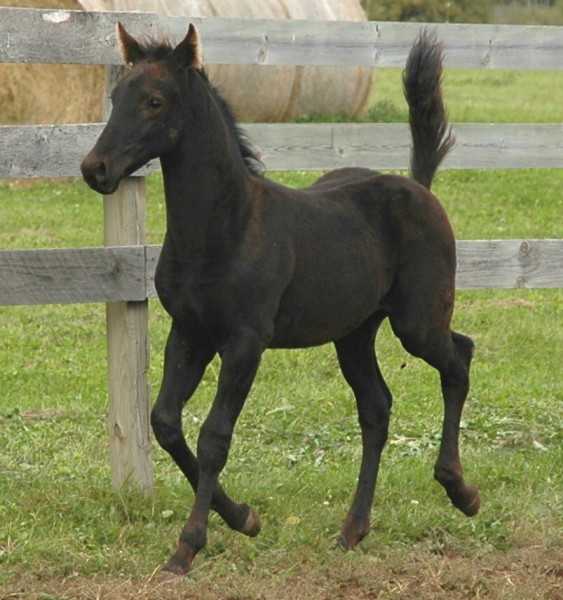To ensure your safety while riding a horse, it's important to have correct posture and seat. This helps the horse make the appropriate moves and will also help it move it's feet freely. You must make sure your stirrups are your length, otherwise you will fall and get hurt. To make sure they are the correct length you would stand up in the stirrups and check the gap between your seat and the saddle. You should be able to slide your hand vertically in between you and your saddle. You want to the the stirrups to be your length every time you ride.
If you ride bareback you can feel every muscle and movement of the horse. Never practice riding bareback on a young or inexperienced horse. It's best to learn bareback by riding a broke horse. As you are riding, focus on developing what is called an independent seat. An independent seat means that your hind end is separate and independent from your legs and your back; your seat is what moves with the horse. The best way to develop an independent seat is to spen a lot of time riding bareback on a nice horse.
Monday, March 12, 2012
Saturday, March 10, 2012
Horse Training
When you are ready to mount the horse, it's important to practice both sides. This helps the horse be equally developed and have less of a risk of scaring your horse. Start by putting both reins in your left hand and turning your stirrup so you can put your foot in it. If your horse is to tall, you may hold onto the horn to help pull yourself up. As you pull yourself up don't kick or pull on the reins.Once on the horse, sit and pet the horse.
When dismounting you don't want your horse to start walking because you could get hurt. The first step is to stop the horse and stand. Once the horse is relaxed place both reins in your left hand, with the left rein shorter than the right. Lean froward and swing your right leg over the back of the horse until you are back in the standing position.
Saturday, March 3, 2012
Horse Training
To avoid getting bucked off a horse, take a lot of time reading the horse. The reason why people get bucked off their horse is they ignore what the horse is trying to say. If you get bucked off you missed the signs telling you that the buck was coming. Bucking, rearing, and running off are signs of a horse being emotionally immature and being pushed too far.
Once you have your horse safely saddled and feel confident in the horse's ability to carry the saddle and individual. Before getting on your horse you want to exercise the horse by doing circles. You make the horse walk, trot, and lope to help the horse breathe with a saddle on. If the horse does great one day riding, the next day might not be so great. Horses and people are the same because we all have our bad days and good days. The next day might not go so well but as long as you exercise the horse you will be fine. Once you have exercised the horse you may get on and ride.
Once you have your horse safely saddled and feel confident in the horse's ability to carry the saddle and individual. Before getting on your horse you want to exercise the horse by doing circles. You make the horse walk, trot, and lope to help the horse breathe with a saddle on. If the horse does great one day riding, the next day might not be so great. Horses and people are the same because we all have our bad days and good days. The next day might not go so well but as long as you exercise the horse you will be fine. Once you have exercised the horse you may get on and ride.
Subscribe to:
Posts (Atom)


